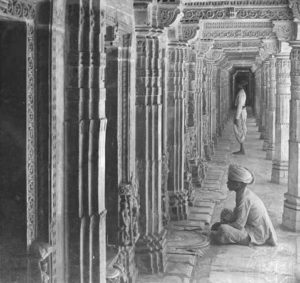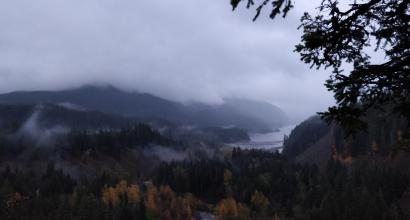1
We commonly say, "This is my nature," "This is his mould," or "This is my mould." What do we mean by 'mould' or 'nature'? By birth, a human being acquires certain instincts, strengths, and nature. How do these come to him? It may have come as a gift, a fruit of previous doings, or as a residue from a previous birth. The reason could be any but it will be with him from his birth. That is his nature or mould. Physical attributes such as hands, legs, sensory organs, and the power of those, along with mental strength collectively form his nature or shape his mould. These various physical and mental features can be classified into the following three categories:
- Pure, good, conservative — sattva
- Common, wayward, vigourous — rajas
- Dirty, bad, inert — tamas
These three forms of quality exist in everyone but in varied proportions. These proportional differences are quite natural. Thus does quality come from birth. Is there nothing that a human being is independently capable of exercising from this? Is s/he not responsible for anything?
The discretionary power to weigh these natural differences, the wisdom of intellect, is present in a few people and in others in a few situations, more than the others or in other circumstances. The prime of this mental strength is real progress. This is the real development. This is the seed of sattva (purity). Individual wisdom is perhaps the greatest trait of human beings. There is no individual who completely lacks it. It exists in smaller proportions in everyone. The extent to which he nurtures and strengthens this makes him independent. This is the opportunity that is available to humans. That is the ray of hope and path to their rise. This means where nature meets earnestness and honesty there lights up our growth.
2
God or Divinity or Supreme Energy is present is something that is discussed earlier in my previous work. There are many ways to identify and recognize God. It is difficult to completely describe or comprehend divinity with one attribute. Divinity or God is embedded with many attributes and there are some which are mutually opposing. We recognize or identify a God that is likeable to us. We describe him as one who holds infinite attributes. In those infinite attributes there are some which are more likeable to us. We classify and mention them with emphasis. The important three among them are:
- सत् (sat) - being present, existence, reality
- चित् (chit) - knowledge, being aware, cognizant
- आनन्द (ananda) - happiness, bliss, joy
'Existing' or 'being present' is the foremost among them.
If something exists in reality then we engage ourselves in its search. If something does not exist than there is no need to think about it. If something is untrue or false we need not spend our efforts. It is fruitful to think about something that really exists.
'Existing' or 'being present' means that it is ceaseless in time and space. Therefore it exists and leads to affirmation about the existence of God. It may be good or bad or both. But the fact something exists is true. Our desire to acquire it is also true. There is something that is all-powerful and it is capable of listening to and fulfilling our demands. This is the initial thought that arises in humans.
This thought germinates on its own. It does not take birth because of someone's force or self-imposed obligation towards others. Therefore that is rta (cosmic order). Rta is the first belief from which originates the belief that God is all-powerful.
First, the work that the mind independently carries out becomes rta and later it is strengthened by the words of others. These supportive words and evidences are satya (truth). This means when rta and satya unite, they
form belief. Nature thus gets established. Rta is natural conduct, independent behavior or act of expression. The root word ऋ (r) means 'speed' or 'movement.' In human life, every day there are new situations and circumstances that bring about new questions. When a new question or situation confronts a person, how does he respond to it without another's support or without thinking about it or without logically reasoning it out? Such an impulsive and first reaction is rta.
In this way the answer he finds for himself and then which he tallies it with the advice, suggestions, and wisdom provided by others gets transformed from rta to satya, which is determined.
Therefore, rta is the root of the tree of truth. Rta is the one that becomes satya when it comes in contact with the world. Satya is the first element of the knowledge we require for our life. Rta is the predecessor to satya. Thus, rta and satya become the foundation stones of belief. Anything that does not align with rta or satya qualifies to become the untruth or falsehood. Anything which follows falsehood eventually will become false itself. From falsehood arises destruction. Therefore the ancient saying सत्यन्नास्ति परो धर्मः (There is no dharma higher than truth).
The primordial form of satya is rta and satya is the developed state of rta.
To be continued…
This is an English translation of a Kannada monograph titled ‘ಋತ, ಸತ್ಯ, ಧರ್ಮ.’ Edited by Hari Ravikumar.















































